Nage-no-kata on:
[Wikipedia]
[Google]
[Amazon]
is one of the two of
 ''Tori'' approaches ''Uke'' using . ''Tori'' and ''Uke'' grip using a standard right-handed sleeve-lapel grip. ''Uke'' initiates by stepping forward using into . Tori responds by stepping backwards (''tsugi ashi''). ''Uke's'' balance is compromised and he attempts to regain the advantage by stepping forward again and ''Tori'' again responds by stepping backwards, further unbalancing ''Uke''. On ''Uke's'' second attempt to regain his balance (''i.e.'' his third step forward), ''Tori'' breaks rhythm, dropping to his left knee, and throws ''Uke'' to his rear, pulling with a steering motion.
''Tori'' and ''Uke'' return to their feet and repeat the technique in the opposite (''i.e.'' left-handed) orientation.
*
''Tori'' approaches ''Uke'' using . ''Tori'' and ''Uke'' grip using a standard right-handed sleeve-lapel grip. ''Uke'' initiates by stepping forward using into . Tori responds by stepping backwards (''tsugi ashi''). ''Uke's'' balance is compromised and he attempts to regain the advantage by stepping forward again and ''Tori'' again responds by stepping backwards, further unbalancing ''Uke''. On ''Uke's'' second attempt to regain his balance (''i.e.'' his third step forward), ''Tori'' breaks rhythm, dropping to his left knee, and throws ''Uke'' to his rear, pulling with a steering motion.
''Tori'' and ''Uke'' return to their feet and repeat the technique in the opposite (''i.e.'' left-handed) orientation.
* 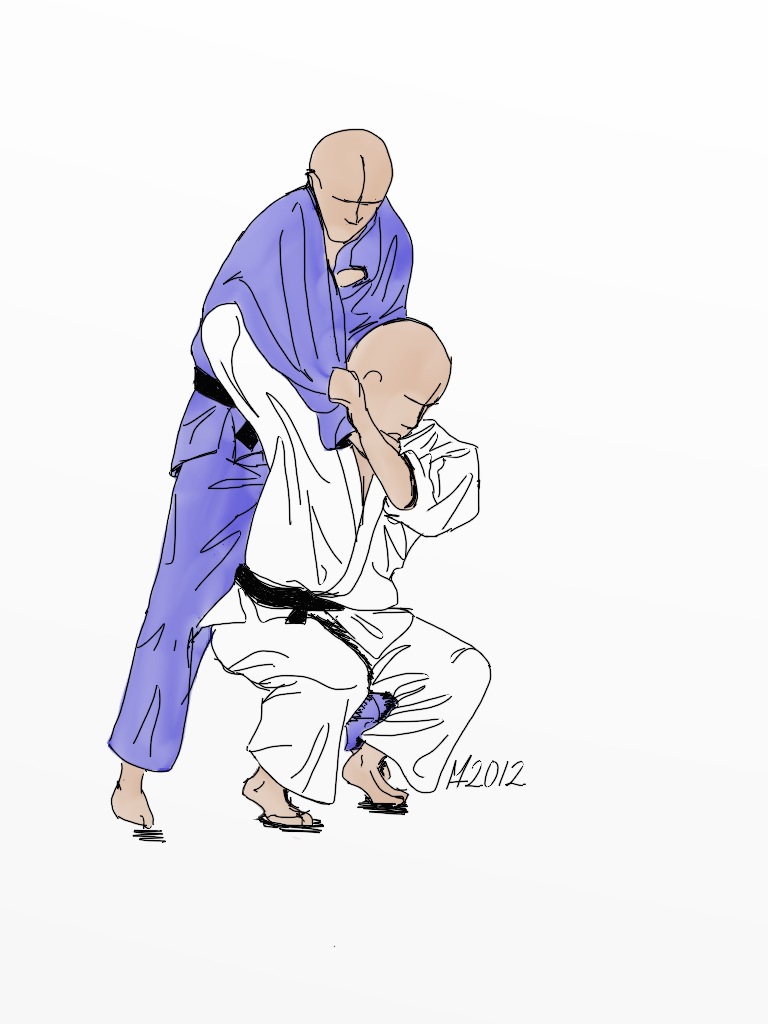 ''
'' ''
''
 ''
'' ''
'' ''
''
 ''
''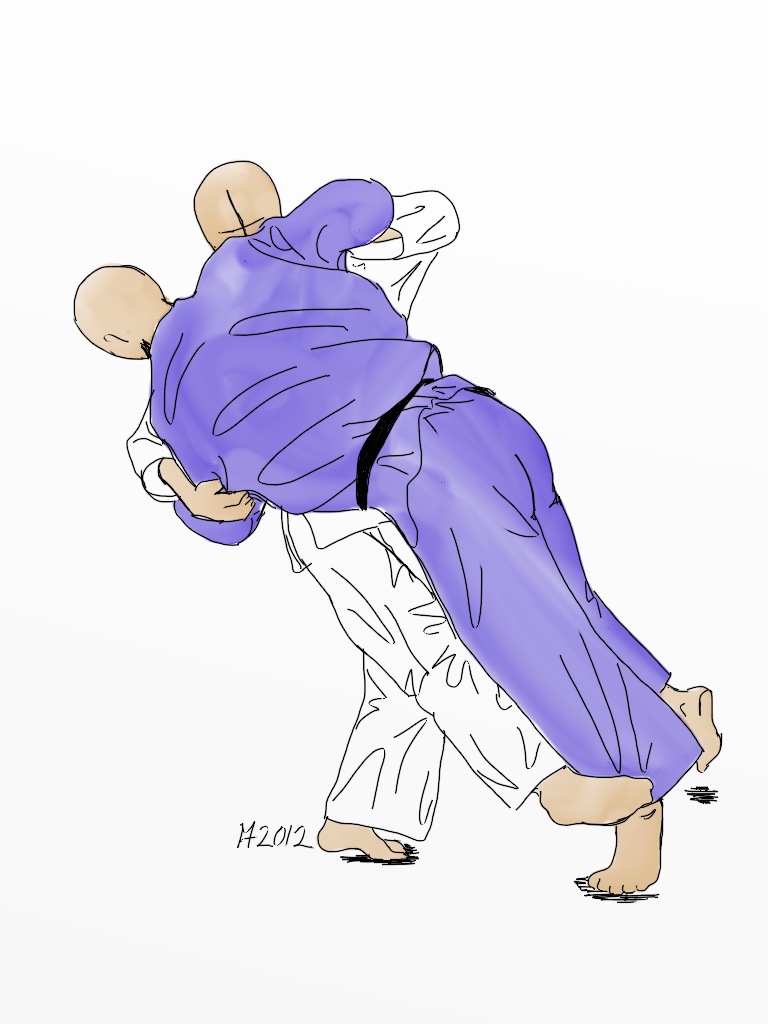 ''
''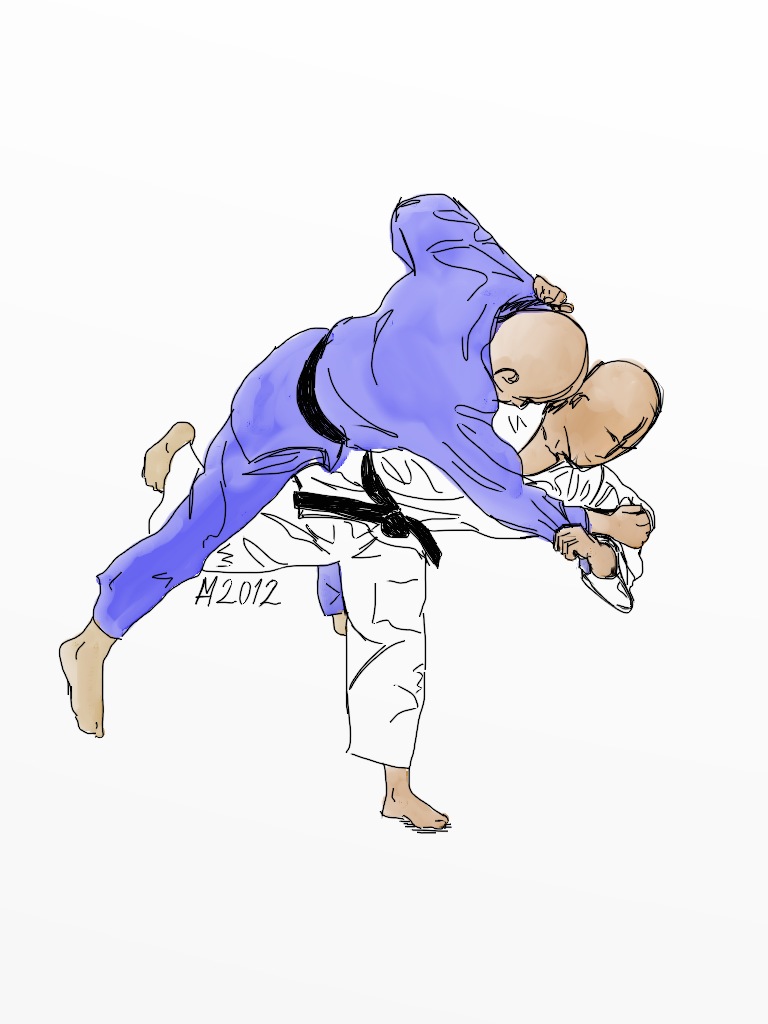 ''
''
 ''
'' '' Ura nage (裏投)'' - rear throw
*
'' Ura nage (裏投)'' - rear throw
* ''
''
 '' Yoko gake (横掛)'' - side hook
*
'' Yoko gake (横掛)'' - side hook
*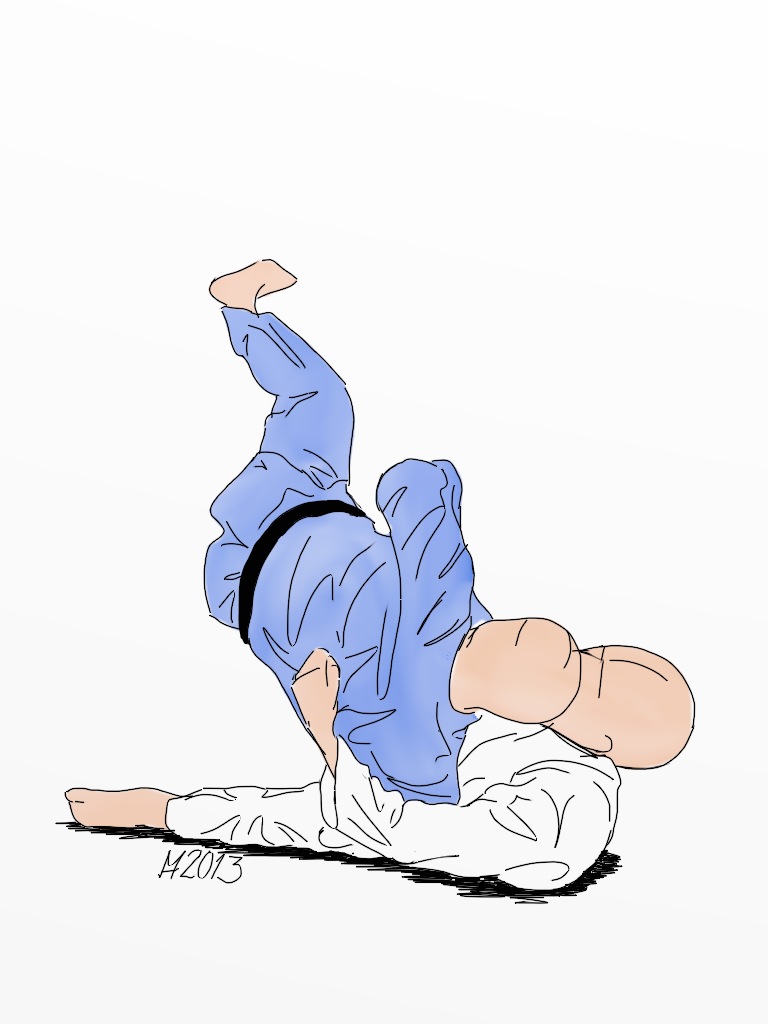 '' Yoko guruma (横車)'' - side wheel
*
'' Yoko guruma (横車)'' - side wheel
*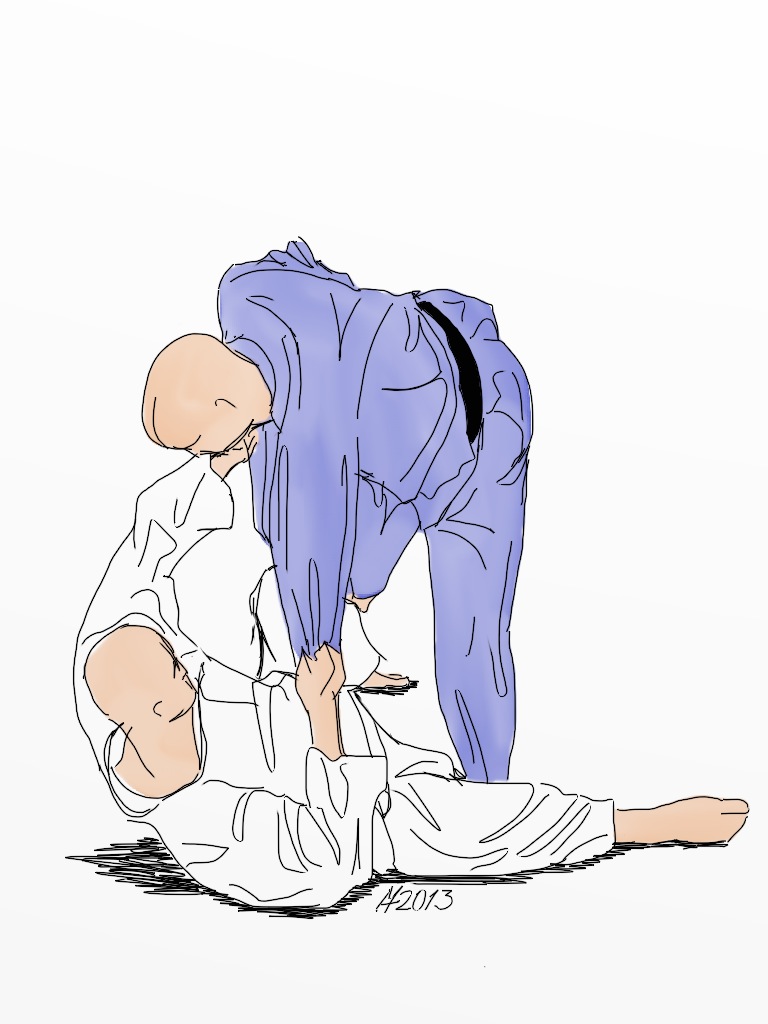 ''
''
Judo Information Site.
Nage no Kata instruction and links
Nage No Kata Instructional Video
A demonstration at the Kodokan. Tori: Dohba Yoshihisa Uke: Nishimoto Nimoru
{{Judo Judo kata Throw (grappling)
Kodokan
The , or ''Kōdōkan'' (講道館), is the headquarters of the worldwide judo community. The ''kōdōkan'' was founded in 1882 by Kanō Jigorō, the founder of judo, and is now an eight-story building in Tokyo. Etymology
Literally, ''kō'' ...
Judo
is an unarmed gendai budō, modern Japanese martial art, combat sport, Olympic sport (since 1964), and the most prominent form of jacket wrestling competed internationally.『日本大百科全書』電子版【柔道】(CD-ROM version of Encyc ...
. It is intended as an illustration of the various concepts of that exist in judo, and is used both as a training method and as a demonstration of understanding.
History
The ''nage-no-kata'' was developed by Jigoro Kano as a method of illustrating principles of throwing to allow students to more effectively apply them inrandori
is a term used in Japanese martial arts to describe free-style practice (sparring). The term denotes an exercise in 取り ''tori'', applying technique to a random ( 乱 ''ran'') succession of ''uke'' attacks.
The actual connotation of ''rand ...
. Initially the kata
''Kata'' is a Japanese word ( 型 or 形) meaning "form". It refers to a detailed choreographed pattern of martial arts movements. It can also be reviewed within groups and in unison when training. It is practiced in Japanese martial arts ...
consisted of ten techniques. These were subsequently appended with the addition of a further five throws, including ''kata guruma
is one of the traditional forty throws of judo as developed by Kano Jigoro. Kata guruma belongs to the third group of the traditional throwing list in the ''Gokyo no waza'' of the Kodokan Judo. It is also part of the current 67 Throws of K ...
'' and '' uki otoshi''.
Description
Thekata
''Kata'' is a Japanese word ( 型 or 形) meaning "form". It refers to a detailed choreographed pattern of martial arts movements. It can also be reviewed within groups and in unison when training. It is practiced in Japanese martial arts ...
is composed of 3 techniques each from the five classifications of throw
Throwing is a physical action that consists of mechanically accelerating a projectile and then releasing it into a ballistic trajectory, usually with the aim of impacting a distant target. ''Throwing'' typically refers to hand-throwing by a ...
in judo:
*
*
*
*
*
Each of these 15 techniques is performed twice in the specified order, both right and left handed. The kata is generally performed in a strictly formalised manner with clearly defined .
and approach the mat from opposite sides, with Tori on the left hand of the and Uke on the right (''i.e.'' as they would be if facing towards the ''Joseki''). They bow as they step on the mat, then turn to face the ''Joseki'' and execute a , then turn to face each other and execute a . Tori and Uke step in, left foot first, to adopt .
*
 ''Tori'' approaches ''Uke'' using . ''Tori'' and ''Uke'' grip using a standard right-handed sleeve-lapel grip. ''Uke'' initiates by stepping forward using into . Tori responds by stepping backwards (''tsugi ashi''). ''Uke's'' balance is compromised and he attempts to regain the advantage by stepping forward again and ''Tori'' again responds by stepping backwards, further unbalancing ''Uke''. On ''Uke's'' second attempt to regain his balance (''i.e.'' his third step forward), ''Tori'' breaks rhythm, dropping to his left knee, and throws ''Uke'' to his rear, pulling with a steering motion.
''Tori'' and ''Uke'' return to their feet and repeat the technique in the opposite (''i.e.'' left-handed) orientation.
*
''Tori'' approaches ''Uke'' using . ''Tori'' and ''Uke'' grip using a standard right-handed sleeve-lapel grip. ''Uke'' initiates by stepping forward using into . Tori responds by stepping backwards (''tsugi ashi''). ''Uke's'' balance is compromised and he attempts to regain the advantage by stepping forward again and ''Tori'' again responds by stepping backwards, further unbalancing ''Uke''. On ''Uke's'' second attempt to regain his balance (''i.e.'' his third step forward), ''Tori'' breaks rhythm, dropping to his left knee, and throws ''Uke'' to his rear, pulling with a steering motion.
''Tori'' and ''Uke'' return to their feet and repeat the technique in the opposite (''i.e.'' left-handed) orientation.
*  ''
''Seoi nage
is a throw in judo. It is one of the traditional forty throws of judo as developed by Jigoro Kano. It belongs to the first group, Dai Ikkyo, of the traditional throwing list, Gokyo (no waza), of Kodokan Judo. It is also part of the current of ...
(背負投)'' - shoulder throw
Uke approaches tori, steps forward with the right foot and raises the right hand as a hammer fist to strike directly on the top of tori's head. This works better if uke uses some power and momentum to strike. Tori allows the blow to begin to fall. Tori steps around 180 degrees, grabs (pulls) uke's right arm to continue to allow uke's momentum to follow forward. Tori does not deflect the blow to the side, but assists in moving the blow (and uke) forward and downward. The forward momentum of uke's blow makes uke fall onto tori's back (kuzushi). At the same time, tori is ready to receive uke on his back and turns his shoulders and body while maintaining grip of the arm, redirecting the forward energy of the fall (and of uke) to the ground.
Tori and Uke return to their feet and repeat the technique in the opposite left-handed orientation.
*  ''
''Kata guruma
is one of the traditional forty throws of judo as developed by Kano Jigoro. Kata guruma belongs to the third group of the traditional throwing list in the ''Gokyo no waza'' of the Kodokan Judo. It is also part of the current 67 Throws of K ...
(肩車)'' - shoulder wheel
''Tori'' approaches ''Uke's'' side, and receives the attack of Uke, which is the standard grip, explained previously, named ''Kumi kata'' (組方, fundamental grip) and pushing against uke. ''Tori'' follows the force of ''Uke'' and makes the first step backwards, as in the previous throws. In the second step, ''Tori''
''Koshi-waza'' (hip techniques)
* ''
''Uki goshi
is one of the original 40 Throw (grappling), throws of Judo as developed by Jigoro Kano. It belongs to the first group, Judo Lists#Dai Ikkyo, Dai Ikkyo, of the traditional throwing list, Gokyo (no waza), of Kodokan Judo. It is also part of the cur ...
(浮腰)'' - floating hip throw
* ''
''Harai goshi
is one of the original 40 throws of Judo as developed by Kano Jigoro. It belongs to the second group of the traditional throwing list in the ''Gokyo no waza'' of the Kodokan Judo. It is also part of the current 67 Throws of Kodokan Judo, and c ...
(払腰)'' - sweeping hip throw
* ''
''Tsurikomi goshi
, is one of the original 40 throws of Judo as developed by Jigoro Kano. It belongs to the second group, Dai Nikyo, of the traditional throwing list, Gokyo (no waza), of Kodokan Judo. It is also part of the current 67 Throws of Kodokan Judo. It i ...
(釣込腰)'' - lifting/pulling hip throw
''Ashi-waza'' (foot techniques)
* ''
''Okuriashi harai
is one of the original 40 throws of Judo as developed by Kano Jigoro. It belongs to the second group of the traditional throwing list in the ''Gokyo no waza'' of the Kodokan Judo. It is also part of the current 67 Throws of Kodokan Judo. It ...
(送足払)'' - sliding foot sweep
* ''
''Sasae tsurikomi ashi
is one of the traditional forty throws of Judo as developed by Jigoro Kano. Sasae Tsurikomi Ashi belongs to the first group, Dai Ikkyo, of the traditional throwing list, Gokyo-no-waza of Kodokan
The , or ''Kōdōkan'' (講道館), is t ...
(支釣込足)'' - Propping and drawing ankle throw
* ''
''Uchi mata
is one of the original 40 throws of Judo as developed by Kanō Jigorō. It belongs to the second group, Dai Nikyo, of the traditional throwing list, Gokyo (no waza), of Kodokan Judo. It is also part of the current 67 Throws of Kodokan Judo. It ...
(内股)'' - inner thigh throw
''Ma-sutemi-waza'' (rear sacrifice techniques)
* ''
''Tomoe nage
is one of the traditional forty throws of jujutsu and Judo. It belongs to the third group (Sankyo) of the traditional throwing list, the traditional Gokyo (no waza), and the current 67 Throws of Kodokan Judo.
Tomoe nage is categorized as a front ...
(巴投)'' - circle throw
* '' Ura nage (裏投)'' - rear throw
*
'' Ura nage (裏投)'' - rear throw
* ''
''Sumi gaeshi
is one of the original 40 throws of Judo as developed by Jigoro Kano. It belongs to the fourth group,
Dai Yonkyo, of the traditional throwing list, Gokyo-no-Nagewaza, of Kodokan Judo. It is also part of the current 67 Throws of Kodokan Judo. It ...
(隅返)'' - corner reversal
''Yoko-sutemi-waza'' (side sacrifice techniques)
* '' Yoko gake (横掛)'' - side hook
*
'' Yoko gake (横掛)'' - side hook
* '' Yoko guruma (横車)'' - side wheel
*
'' Yoko guruma (横車)'' - side wheel
* ''
''Uki waza
, is one of the original 40 throws of Judo as developed by Jigoro Kano. It belongs to the fifth group, Gokyo, of the traditional throwing list, Gokyo (no waza), of Kodokan Judo. It is also part of the 67 throws of Kodokan Judo. It is classified a ...
(浮技)'' - floating technique
References
External links
Judo Information Site.
Nage no Kata instruction and links
Nage No Kata Instructional Video
A demonstration at the Kodokan. Tori: Dohba Yoshihisa Uke: Nishimoto Nimoru
{{Judo Judo kata Throw (grappling)